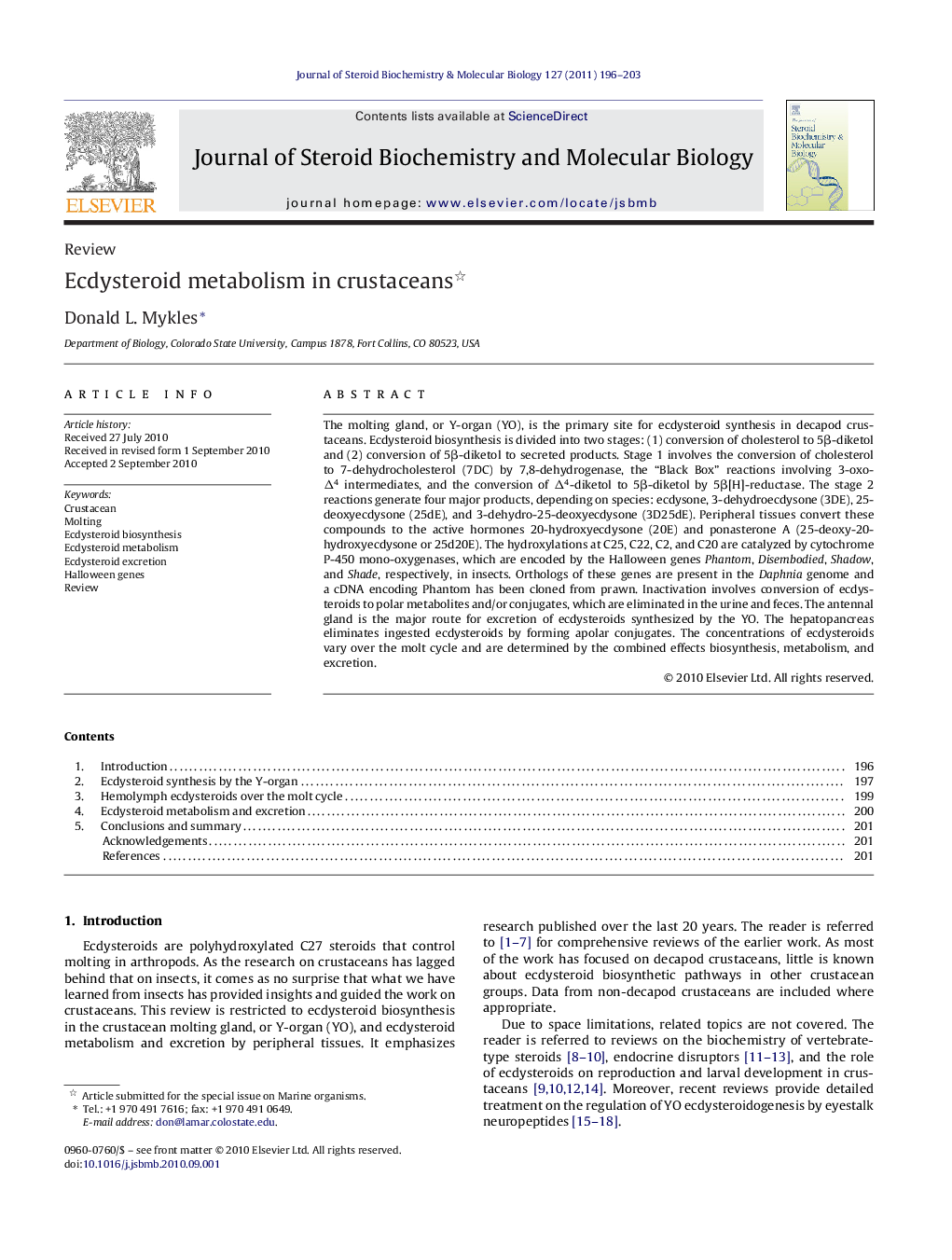| Article ID | Journal | Published Year | Pages | File Type |
|---|---|---|---|---|
| 1991815 | The Journal of Steroid Biochemistry and Molecular Biology | 2011 | 8 Pages |
The molting gland, or Y-organ (YO), is the primary site for ecdysteroid synthesis in decapod crustaceans. Ecdysteroid biosynthesis is divided into two stages: (1) conversion of cholesterol to 5β-diketol and (2) conversion of 5β-diketol to secreted products. Stage 1 involves the conversion of cholesterol to 7-dehydrocholesterol (7DC) by 7,8-dehydrogenase, the “Black Box” reactions involving 3-oxo-Δ4 intermediates, and the conversion of Δ4-diketol to 5β-diketol by 5β[H]-reductase. The stage 2 reactions generate four major products, depending on species: ecdysone, 3-dehydroecdysone (3DE), 25-deoxyecdysone (25dE), and 3-dehydro-25-deoxyecdysone (3D25dE). Peripheral tissues convert these compounds to the active hormones 20-hydroxyecdysone (20E) and ponasterone A (25-deoxy-20-hydroxyecdysone or 25d20E). The hydroxylations at C25, C22, C2, and C20 are catalyzed by cytochrome P-450 mono-oxygenases, which are encoded by the Halloween genes Phantom, Disembodied, Shadow, and Shade, respectively, in insects. Orthologs of these genes are present in the Daphnia genome and a cDNA encoding Phantom has been cloned from prawn. Inactivation involves conversion of ecdysteroids to polar metabolites and/or conjugates, which are eliminated in the urine and feces. The antennal gland is the major route for excretion of ecdysteroids synthesized by the YO. The hepatopancreas eliminates ingested ecdysteroids by forming apolar conjugates. The concentrations of ecdysteroids vary over the molt cycle and are determined by the combined effects biosynthesis, metabolism, and excretion.
